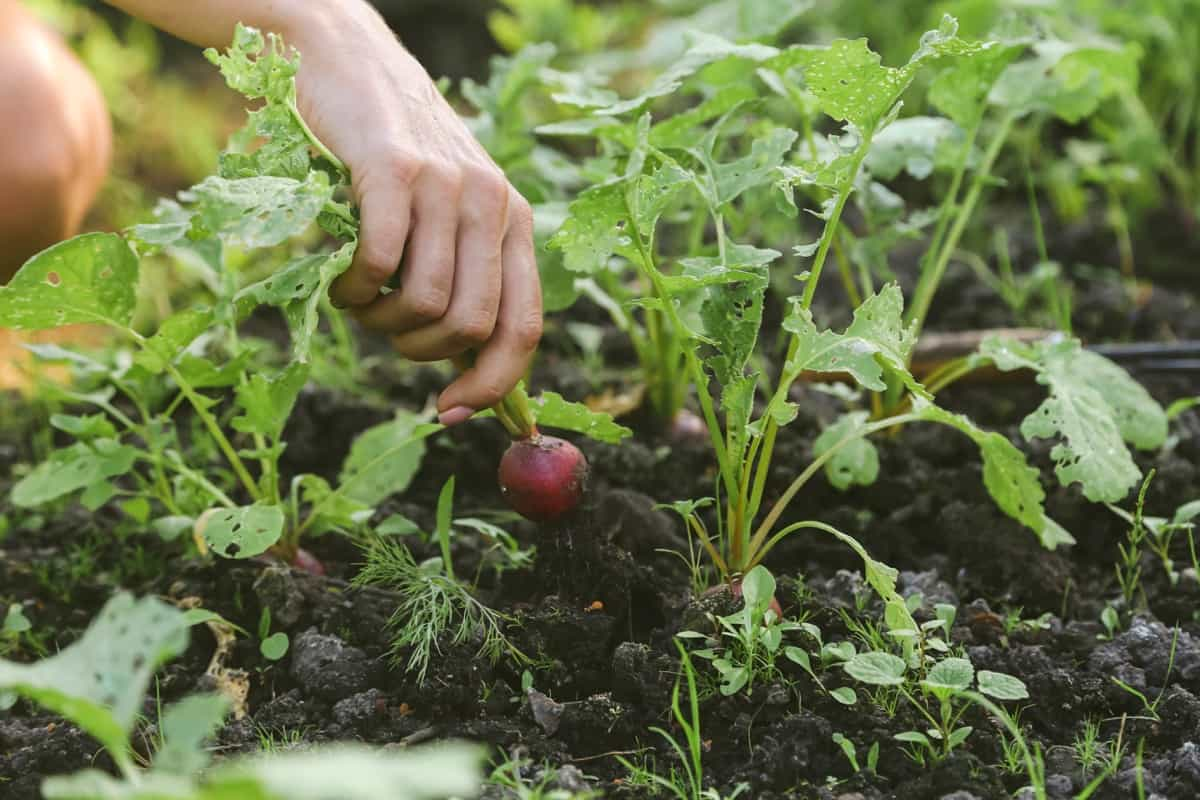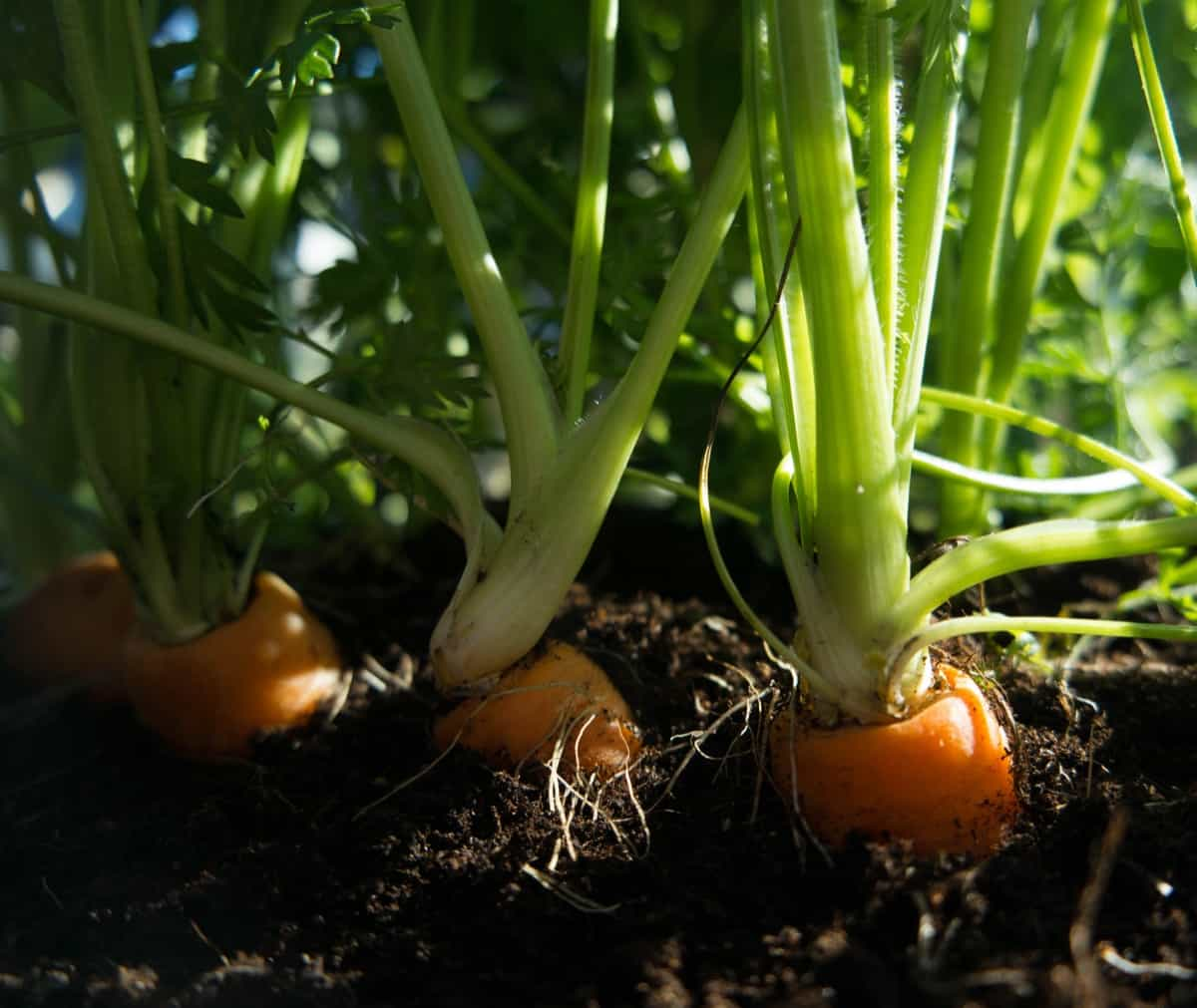Pollinating root vegetable plants might not be the first thing that comes to mind when you think of growing carrots, radishes, beets, and other root vegetables. However, if you’re interested in seed saving or simply aiming to improve the health and vigor of your garden, understanding the pollination process can be essential.

You might ask, “How do you pollinate root vegetable plants?” This article will dive into hand and natural pollination methods, the importance of this reproductive process, and some helpful tips for the best results in root vegetable crops.
How to Pollinate Root Vegetable Plants
Methods for Hand Pollination of Root Vegetable Plants
Hand pollination can be a useful tool in your gardening toolkit, particularly when it comes to root vegetable plants. It allows for greater control over the plant breeding process and can help increase the likelihood of successful seed production. The process typically involves manually transferring pollen from the male parts of a flower (the stamen) to the female parts (the pistil) of the same or a different flower.
Hand pollination can be done using a small brush or cotton swab. As you brush the stamen, the pollen will stick to your tool of choice, which you can then gently dab onto the pistil. For root vegetable plants, this can be done with flowers that have been allowed to grow above ground.
Natural Pollination Techniques for Root Vegetable Crops
While hand pollination offers more control, natural pollination methods are generally less labor-intensive and highly effective. One natural method is allowing insects, such as bees, to do the work. These beneficial insects move from flower to flower, searching for nectar and unintentionally transferring pollen.
Another method is wind pollination, where the pollen is carried from one plant to another on the breeze. Ensuring that your root vegetable plants are located where they have access to pollinators and where wind can easily reach them can enhance the success of these natural pollination methods.
The Importance of Pollination in Root Vegetable Plant Reproduction
Pollination plays a vital role in the reproduction of root vegetable plants. While the edible part of these plants develops underground, pollination is necessary to create seeds. Pollen transferred from the stamen to the pistil fertilizes the plant, leading to the development of seeds.
This reproductive process allows for the propagation of the species and plays a role in genetic diversity. Pollination introduces new genetic material into a plant’s offspring, which can result in stronger, healthier plants. Therefore, efficient pollination methods can contribute to a more robust and productive root vegetable garden.
Best Practices for Pollinating Root Vegetable Crops
To maximize the success of your pollination efforts, there are some best practices to consider. When hand pollinating, handling the flowers gently is important to avoid causing any damage. If you’re using natural pollination methods, consider planting various flowering plants nearby to attract more pollinators to your garden.
Additionally, it can be beneficial to provide a water source and shelter for these beneficial insects. When it comes to wind pollination, make sure that your plants are not shielded from the wind by buildings or other barriers. Additionally, the timing of pollination can be key. Flowers are typically most receptive to pollination in the early morning, so this is the ideal time to carry out hand pollination or to ensure that pollinators have access to your garden.
In case you missed it: Home Remedies for Root Rot: How to Fix Naturally, Treatment, and Solutions

Pollination Tips for Successful Root Vegetable Plant Growth
Effective pollination can lead to the successful growth of your root vegetable plants. Beyond just attracting pollinators or implementing hand pollination, remember to provide optimal growing conditions for your plants. This includes proper watering, fertilization, and pest control.
If your plants are healthy, they are more likely to produce plenty of flowers, increasing the chances of successful pollination. Moreover, if you’re growing different varieties of the same type of root vegetable, try to space them out or plant them at different times to prevent cross-pollination if you wish to keep the varieties pure.
Understanding the Pollination Process in Root Vegetable Plants
Understanding the pollination process is fundamental for successful gardening. Pollination moves pollen from the male anther to the female stigma, occurring within the same flower, between different flowers on one plant, or between flowers on different plants. It’s this process that allows for fertilization and the production of seeds.
While root vegetables are typically grown for the edible part that develops underground, allowing some plants to flower and undergo pollination can be beneficial, particularly if you’re interested in saving and collecting seeds.
Enhancing Pollination in Root Vegetable Gardens
In addition to the techniques already mentioned, there are other ways to enhance pollination in your root vegetable garden. One such method is diversifying your garden by incorporating plants of varying shapes, colors, and blooming times. This variety can attract a wider range of pollinators.
Another strategy is to limit or avoid the use of pesticides, which can harm pollinators. Instead, opt for organic pest control methods whenever possible. Creating a pollinator-friendly habitat can also be beneficial. This can be achieved by including nesting sites for bees and other insects and providing a water source.
Common Challenges and Solutions in Pollinating Root Vegetable Plants
Despite best efforts, gardeners sometimes face challenges when pollinating root vegetable plants. One common issue is a lack of pollinators. This can often be addressed by incorporating more pollinator-friendly plants into your garden or setting up a bee house. Another challenge might be unfavorable weather conditions, such as strong winds or heavy rains, which can hinder pollination.
To counter this, you could consider hand pollination or provide some kind of barrier or cover to protect the plants during extreme weather. Remember, patience and observation can be vital tools. Keep a close eye on your garden, and don’t be afraid to try different techniques until you find what works best for your plants.
In case you missed it: How to Treat Brown Spots on Avocado Tree Leaves Naturally: Causes, Fix With Effective Organic Home Remedies

Promoting Cross-pollination in Root Vegetable Crops
Cross-pollination in root vegetable crops can be encouraged to increase genetic diversity and potentially create new varieties. It involves the transfer of pollen from one plant to another of the same species. This can occur naturally, facilitated by wind or insects, but it can also be done manually.
To promote cross-pollination, you can plant different varieties of the same root vegetable close to each other. If you’re hand pollinating, you can transfer pollen from one variety to another. However, remember that cross-pollination can result in unpredictable traits in the next generation, so it may not be desirable if you’re trying to maintain a specific variety.
Conclusion
Pollination is an essential process in the lifecycle of root vegetable plants, playing a crucial role in seed production and genetic diversity. Hand and natural pollination offer unique advantages and can be leveraged effectively in a root vegetable garden. Understanding the intricacies of the pollination process, and knowing how to enhance it, can significantly improve your garden’s output and health.
Best practices, including mindful garden planning, gentle handling during hand pollination, and creating a pollinator-friendly environment, can help overcome common challenges and promote successful growth. Whether promoting cross-pollination for genetic diversity or trying to keep a certain variety pure, these strategies offer a path to robust, thriving root vegetable crops.
- Feed Your Flock for Less: Top 10 Tips to Save on Chicken Feed
- Ultimate Guide to Ossabaw Island Hog: Breeding, Raising, Diet, and Care
- Hatching Answers: The Top 10 Reasons Your Chickens Aren’t Laying Eggs
- Eggs and Economics: Breaking Down the Cost of Raising Backyard Chickens
- Defend Your Greens: Proven Methods to Keep Iguanas Out of Your Garden
- Ultimate Guide to Cinnamon Queen Chicken: A Comprehensive Guide for Beginners
- Ultimate Guide to California Tan Chicken: Breeding, Raising, Diet, Egg-Production and Care
- Ultimate Guide to Marsh Daisy Chicken: Breeding, Raising, Diet, and Care
- 10 Types of Chicken Farming Businesses You Can Start for Profits